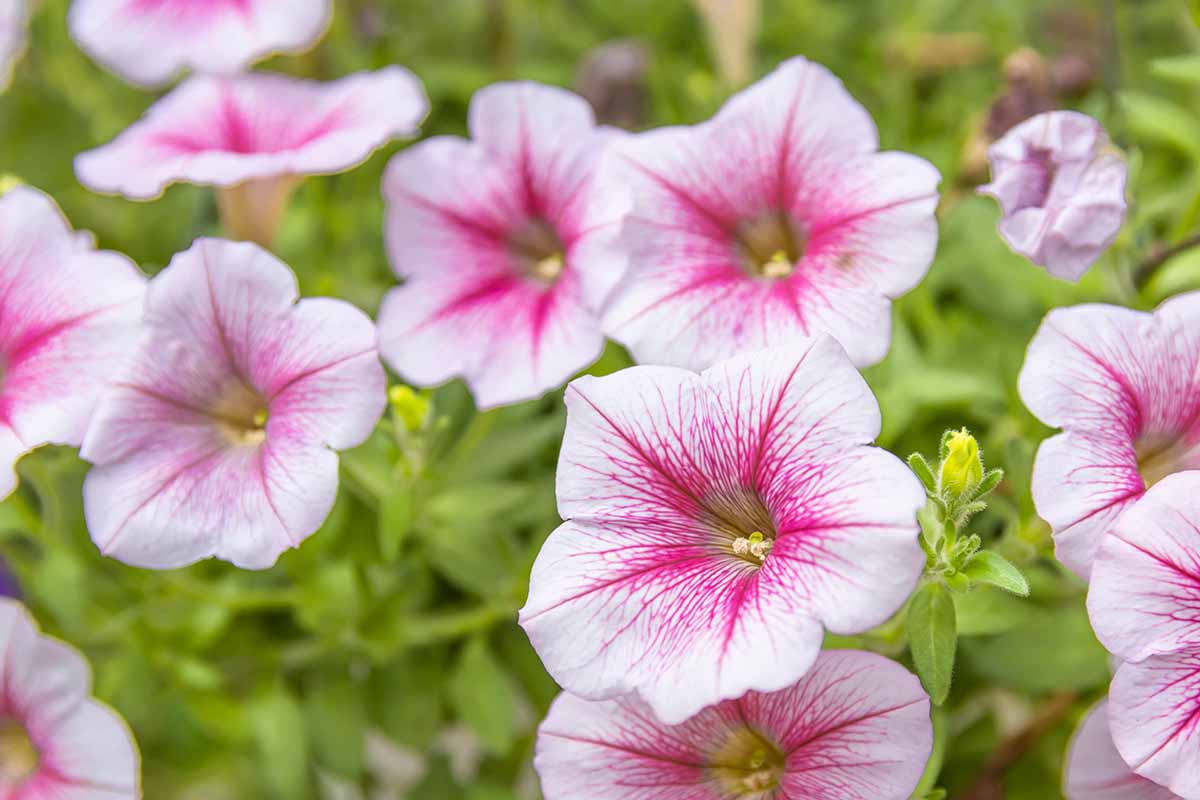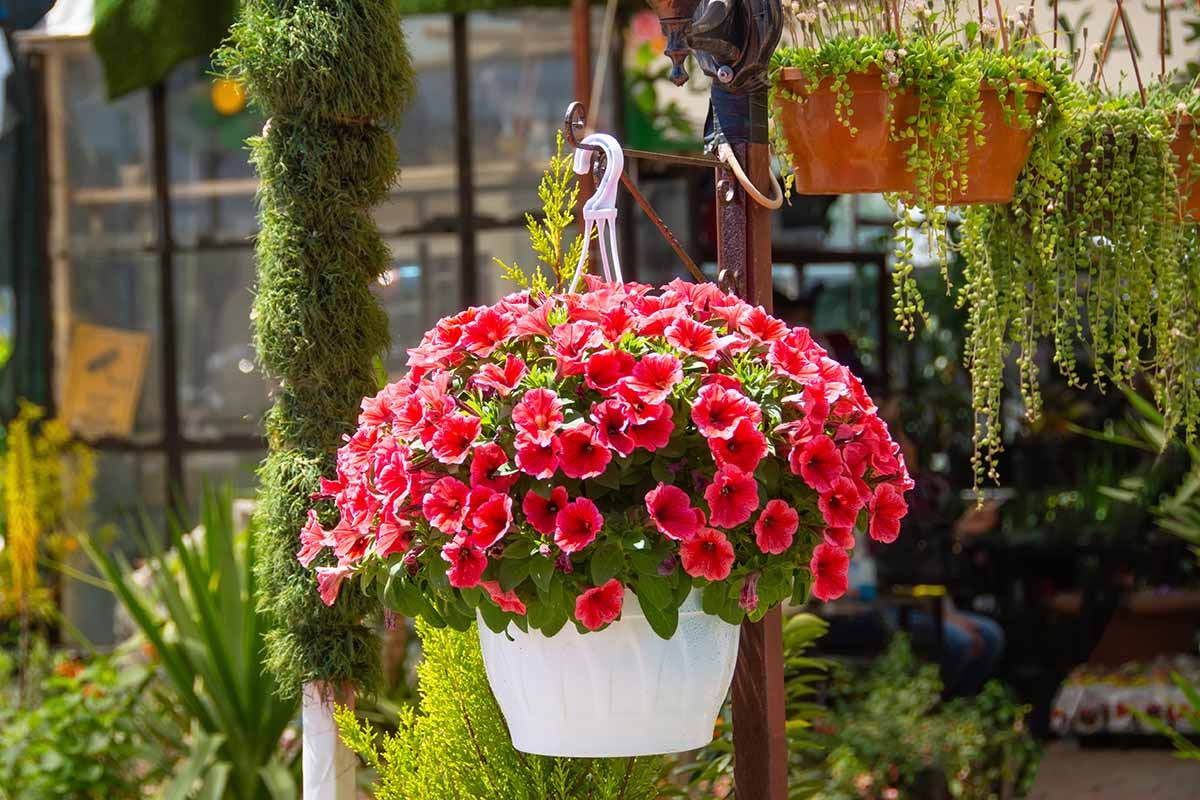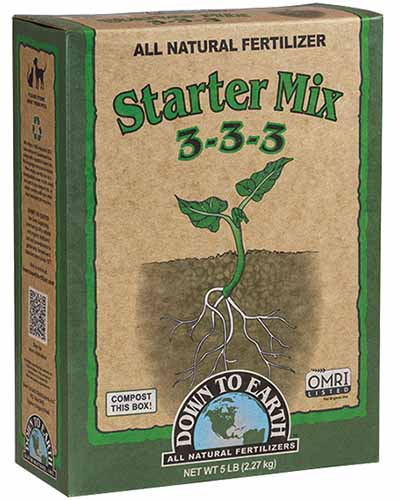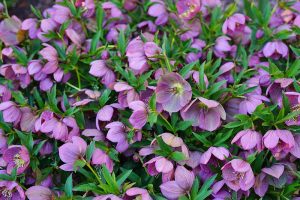When I was a little baby gardener, trying my hand at growing plants in my mom’s garden, I started out with a cheap little petunia that I found in the bargain bin at a grocery store.
That year and for many years to follow, my petunia plants would grow happily and continue to bloom all summer, but they almost always turned into a leggy mess.
They stopped looking like the bushy, colorful plants we know and love and started to look scraggly and thin midway through the growing season.
I knew they could look beautiful. The ones in the hanging pots lining our Main Street always looked phenomenal. What was I doing wrong?

We link to vendors to help you find relevant products. If you buy from one of our links, we may earn a commission.
Now, gather ‘round, children. Auntie Kristine is going to tell you about a time long, long ago, before the internet was available in your pocket.
Back then I couldn’t just fire up the family computer and do a quick search to figure out the problem. I had to ask around. I checked out books at the library, and I talked to a friendly expert at the local nursery.
That’s how I first learned why these plants become straggly and how to avoid it.
I even learned how to fix the problem if the plant became a leggy mess. Once I learned the way of the petunia, I never had to deal with an ugly, lanky pile of stems ever again.
All these years later, I’ll come across a home with a pot full of leggy flowers, and I want to share the good word. That would be a bit cheeky, so I’ll just share it with you, instead.
While we’re at it, if you need a quick rundown of how to best grow and care for petunias, visit our guide. Then, we’ll dive into growing bushier, happier plants.
Coming right up, here’s what we’re going to go over:
What You’ll Learn
Leggy petunias are exceptionally common because these plants naturally take on a scraggly, lengthy growth habit as they age. So to prevent this, we have to fight against the plant’s natural growth.
Before we talk about prevention or fixes, let’s talk about why this kind of growth happens.
Why Do Petunias Become Leggy?
Petunias naturally have a trailing, pendulous, or mounding habit.
As each flower grows and fades, the plant sends out longer stems with new flower buds. It’s not too far a stretch to go from trailing to leggy and it can happen quickly.

Throughout its growth cycle, the plant constantly sends out new growth.
Whether this growth is thick and lush or long and thin depends on several factors, including the amount of moisture, sunlight, and nutrients the plant receives.
There are self-heading varieties out there and these will typically maintain a much more compact habit without any intervention from you.
Even if you are growing one of these, it still helps to know what to do to prevent legginess.
Preventing Legginess
Petunias provided with the right amount of water are less likely to become extremely leggy.
The amount of water a plant requires depends on the species or hybrid you are growing, location, time of year, and whether or not it’s growing in a container.
Many hybrids do best if the soil is allowed to just barely dry out between waterings, while some need a bit more consistent moisture.

As the summer progresses and the weather becomes hotter and drier, the plants will inevitably need more moisture.
The trick is to keep the moisture level consistent. Don’t let the plant dry out and wilt one week and then keep it overly wet the next, petunias do best with consistency.
Sunlight is also a factor. A plant that receives too little sun is going to try and stretch and reach to find the amount of light it needs.
They perform best in at least six hours of sunlight, but even more is better. A quick way to produce a leggy plant is to put it in too little sunlight!
Finally, soil nutrition is a crucial factor, particularly for petunias growing in containers. When a plant is in a pot, it has limited access to nutrients. It relies on you to give it what it needs.
Most types will do best when fed every other week with a mild, balanced fertilizer.
I think Down to Earth’s Starter Mix is perfect, because not only does it have the right balance of nutrients with alfalfa meal, fish bone meal, oyster shell, and help meal, but it also contains beneficial endomycorrhizal fungi, which is often lacking in potting soil.
Arbico Organics carries this fertilizer in one- or five-pound containers.
When you provide the perfect conditions for your flowers, all that’s left to do is deadhead the spent flowers.
Anytime you spot a flower that has faded in color, looks a little ragged, or has closed up, pinch it or cut it off just in front of the nearest leaf node or the leaf node behind it.
This encourages the petunia to send out new, branching growth and flower buds, helping to maintain the bushy habit.
How to Fix Leggy Growth
So let’s say, despite your efforts at proper cultivation, your petunia became all leggy and gangly, like a colt that hasn’t grown into its legs. Not to worry, these plants can be fixed right up.
Just cut the stems back. Remove the end two inches or so on the leggy branches, making the cut just in front of a leaf node, whether it has leaves or not. If the plant is extremely leggy, you can cut the branches back by two-thirds.
These plants can handle a lot of pruning, so don’t be shy. Go ahead and give them the hard chop if they’ve gotten especially leggy.
Now, stay on top of deadheading and make sure you’re providing the right amount of water, nutrients, and sunlight.
Leg It From Legginess
I don’t think it’s too much to ask to have big, bushy petunias with piles of color without having to tolerate straggly stems. You don’t have to.
Growing these flowers doesn’t mean you have to deal with ugly, leggy growth.

Hopefully you now know how to deal with leggy, scraggly plants. If you still have questions, tell us all about it in the comments section below.
And for more information about growing petunias, check out these guides next:




